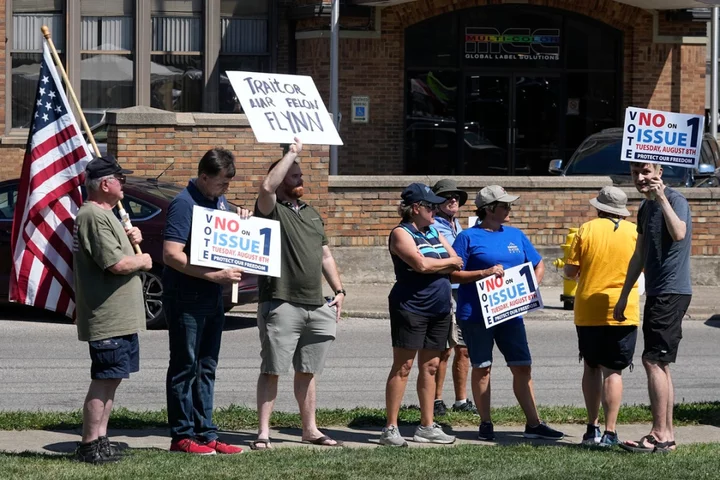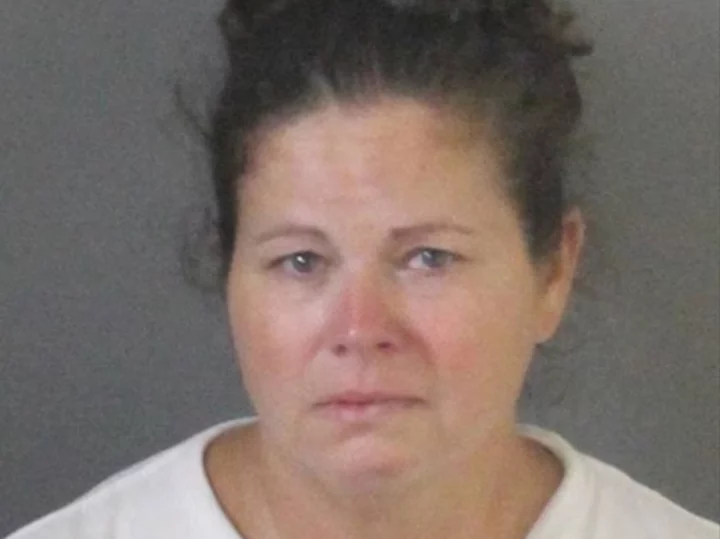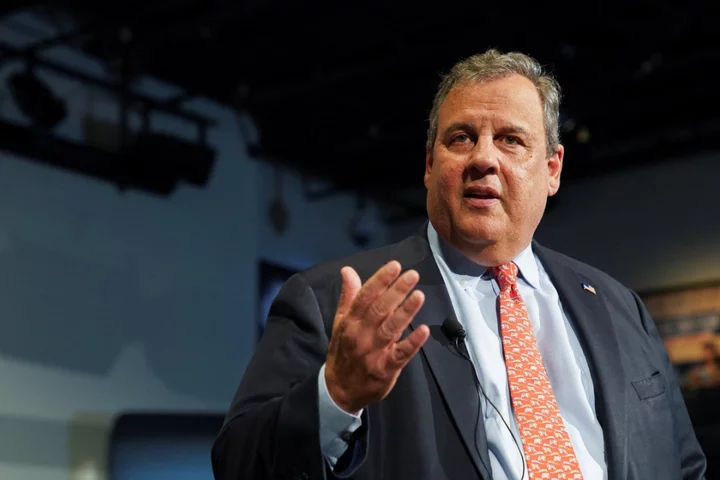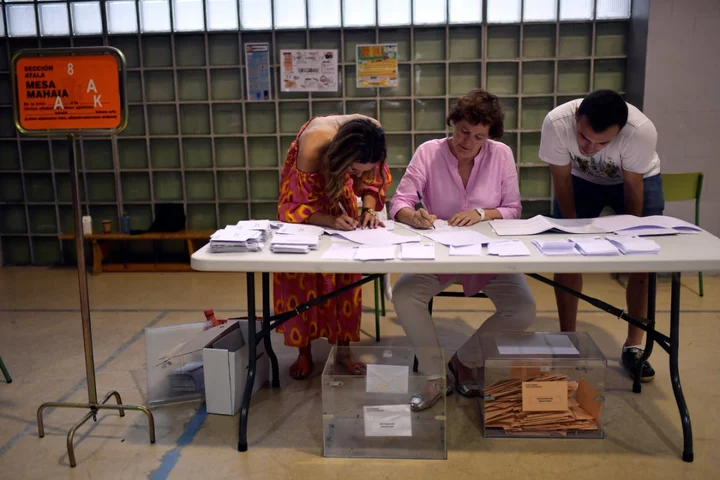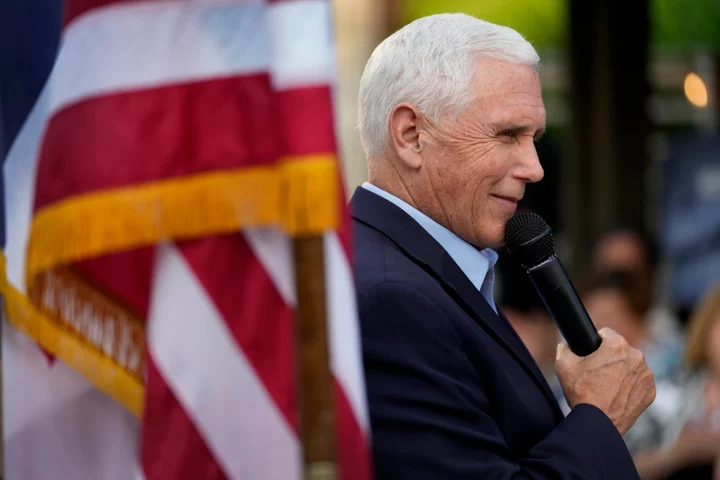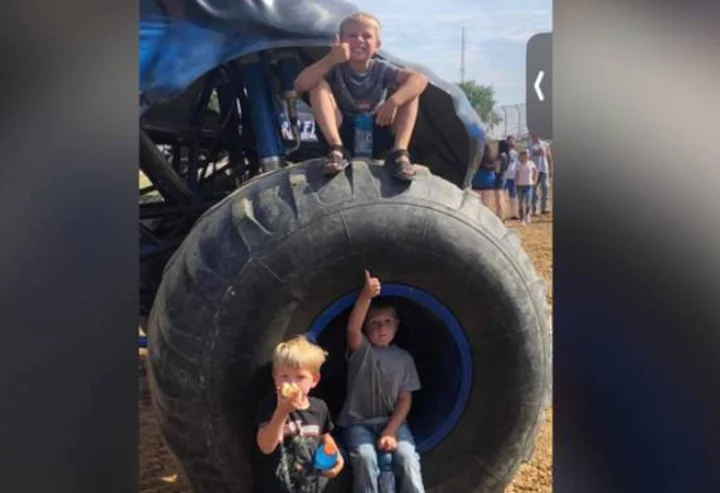Ohio concludes a hastily called and highly charged special election Tuesday, a contest that could determine the fate of abortion rights in the state and fuel political playbooks nationally heading into 2024.
On the ballot is Issue 1, a proposal to raise the threshold for passing future changes to the state's constitution from a simple majority to 60%. But more passionately in the sights of the proposal's backers — including Republican officeholders — is a proposed constitutional amendment on the November ballot that calls for enshrining access to reproductive care in the state's foundational document.
The measure was clearly resonating with voters, who turned out in huge numbers during the early voting period, which ended Sunday. The number of advance ballots cast — a combination of mail and early in-person ballots — hit nearly 700,000, more than double the early vote during the state's two previous midterm primary elections in 2022 and 2018.
Ohio's August elections have historically focused on local issues and been plagued with chronically low turnout.
The Republican lawmakers who backed Issue 1 maintained that the measure was not about thwarting the fall abortion amendment, despite reinstating an August special election just like the ones they had only recently voted to eliminate.
Raising the bar for passing citizen-led constitutional amendments could make it difficult, if not impossible, for the fall proposal to succeed, based on polling figures. Voters in several states, even deeply conservative ones, have affirmed abortion rights since the U.S. Supreme Court overturned Roe v. Wade last year, though usually with less than 60% of the vote.
AP VoteCast polling last year found that 59% of Ohio voters say abortion should generally be legal.
Out-of-state money has poured into both sides of the contest over the 60% threshold, even as both supporters and opponents say one of their main goals is to keep special interests from having more influence over state policy than average Ohioans.
The campaign in favor of Issue 1, Protect Our Constitution, has told voters that raising the threshold will keep deep-pocketed interest groups from pushing redistricting, gun control and minimum wage policies on Ohio. One Person One Vote, the opposition campaign, argues that raising the threshold for passing future amendments would prioritize the interests of Ohio's increasingly conservative GOP supermajority at the statehouse over those of everyday voters.
But abortion rights are at the epicenter of the fight, as Ohio and other states have been given control of their own abortion policies following the Supreme Court overturning Roe v. Wade last summer. Ohio's ban on most abortions had been placed on hold under Roe and then allowed to take effect briefly after the court overturned it. Since then, it has been frozen again while a challenge alleging it violates the state constitution plays out.
The abortion amendment would give individuals the right to make their own reproductive health care decisions, including on contraception, fertility treatment, abortion and miscarriage care, until a fetus is viable outside the womb.
At the same time, a broad bipartisan coalition opposes Issue 1 for other reasons. Former Ohio governors and attorneys general of both parties have come out against the constitutional change, calling it poor public policy. If passed it would reverse 111 years of direct democracy that has the potential to affect future citizen-led ballot efforts.
Protect Women Ohio, the campaign against the fall abortion question, has spent millions on the August election — airing ads suggesting the measure not only codifies abortion, but could pressure children into receiving gender-affirming care and undercut parental rights.
Several legal experts have said there is no language in the amendment supporting the ads' claims, but it follows a pattern through this election cycle of misinformation and fear-mongering being used to sway voters.
Issue 1 opponents have aired ads and mobilized a large coalition, including voting rights, labor, faith and community groups, as well as the state Democratic Party.
It was because of chronically low turnout that lawmakers voted just last year to scrap summer elections, prompting an unsuccessful lawsuit alleging this year's August special election violated the new law and calling further into question if it was brought back solely to thwart abortion rights for Ohioans.
___
The Associated Press receives support from several private foundations to enhance its explanatory coverage of elections and democracy. See more about AP’s democracy initiative here. The AP is solely responsible for all content.
___
Samantha Hendrickson is a corps member for the Associated Press/Report for America Statehouse News Initiative. Report for America is a nonprofit national service program that places journalists in local newsrooms to report on undercovered issues.
Read MoreUkraine war’s heaviest fight rages in east - follow live
Charity boss speaks out over ‘traumatic’ encounter with royal aide
Attacks at US medical centers show why health care is one of the nation's most violent fields
Ohio election that revolves around abortion rights fueled by national groups, money
Taylor Swift bracelet-trading trend makes way to Women’s World Cup in Australia

